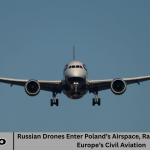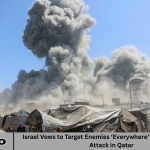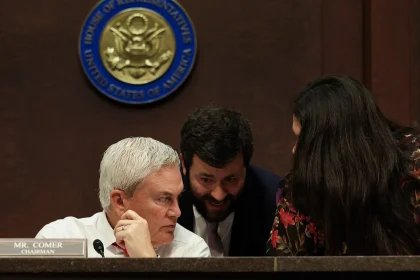Ukraine’s Front Line Wreckage Reveals Sanctions Have Yet to Halt Russia—a sobering reality that has rattled policymakers, economists, and ordinary citizens across Europe. Despite unprecedented sanctions imposed by the United States, European Union, and allied nations, Russia’s ability to sustain its war machine appears disturbingly intact. The ruins scattered across Ukraine’s eastern and southern regions tell a story of relentless bombardment, advanced weaponry, and a state apparatus in Moscow that has adapted to isolation better than expected.
This article dives deep into the realities on the ground, exploring why sanctions have fallen short, how Russia continues to fund its aggression, and what this means for Ukraine’s struggle, global politics, and the future of sanctions as a geopolitical weapon.
The Wreckage on the Front Line
Traveling along Ukraine’s eastern front is a grim reminder that the war has entered a grinding phase. Burned-out tanks, shattered homes, and miles of debris reveal the intensity of Russian artillery and drone strikes. Ukrainian soldiers describe nights lit up with missiles, and mornings filled with the sound of reconnaissance drones circling overhead.
“The sanctions were supposed to cripple them,” says Oleksandr, a Ukrainian commander in the Donbas region. “But they still have fuel, they still have drones, and they still hit us with heavy artillery every day. For us, nothing has changed.”
This sentiment echoes across the front lines. The wreckage isn’t just physical—it’s psychological. Ukrainian fighters question whether the world’s economic warfare has truly dented Russia’s military-industrial complex.
Why Sanctions Haven’t Stopped Russia
Western leaders once touted sanctions as “crippling.” In early 2022, following Russia’s invasion, sweeping restrictions targeted banking systems, energy exports, aviation, and high-tech imports. Yet Russia adapted, leveraging several strategies:
1. Energy Exports Still Flow
Europe cut down on Russian gas, but Moscow shifted to Asia. China and India became lifelines, purchasing Russian crude oil at discounted rates. According to the International Energy Agency, Russia earned over $180 billion from energy exports in 2023, much of it redirected eastward.
2. Parallel Import Networks
Russia created shadow supply chains through countries like Turkey, Kazakhstan, and the UAE. Western components—including semiconductors—still find their way into Russia’s weapons. Analysts report that 70% of Russian missiles recovered in Ukraine contained Western-made electronics.
3. Domestic Substitutes and Adaptation
While luxury goods vanished from Moscow’s high streets, Russia doubled down on domestic production for essentials. State-run factories, sometimes using outdated machinery, continue to churn out weapons, drones, and military equipment.
4. The Ruble and Central Bank Maneuvers
Despite being cut off from SWIFT, Russia’s central bank stabilized the ruble by imposing capital controls, mandating energy payments in rubles, and tapping into foreign reserves held in non-Western banks.
Ukraine’s Perspective: A Long, Hard Fight
For Ukraine, the most pressing question is simple: if sanctions cannot halt Russia, what will?
President Volodymyr Zelensky has repeatedly called for tougher secondary sanctions, targeting not just Russia but the third-party countries enabling it. In a speech marking Ukraine’s Independence Day, he warned, “As long as Russia finds loopholes, the war will drag on. Sanctions must be ironclad, without exceptions.”
On the battlefield, soldiers say sanctions feel distant. “We don’t fight with sanctions,” one soldier joked grimly. “We fight with Javelins, tanks, and our own blood.”
The Global Stakes
The sanctions war isn’t just about Ukraine—it’s about the credibility of Western economic power.
If sanctions fail to cripple Russia, other authoritarian states may conclude that they, too, can withstand Western economic punishment.
Global trade patterns are shifting, with new alliances forming between sanctioned states and emerging economies.
Inflation in the West—caused in part by energy disruptions—has tested public patience with long wars.
What Experts Are Saying
Economists and military analysts remain divided:
Dr. Maria Snegovaya, Atlantic Council: “Sanctions take time. Russia’s economy is weakening structurally, but wartime economies can mask collapse for years.”
Michael Kofman, military analyst: “Russia has shown resilience, but its capacity is not infinite. Sustaining war at this intensity for another decade will be very difficult.”
UN Human Rights Office: “The humanitarian cost of sanctions should never overshadow their purpose. Yet in Russia’s case, the regime has absorbed the pain and redirected it to ordinary citizens.”
Lessons From Past Sanctions
History shows sanctions rarely stop wars outright. In Iraq during the 1990s, sanctions devastated the population but Saddam Hussein stayed in power. In Iran, decades of sanctions weakened the economy but failed to halt its nuclear ambitions. North Korea remains isolated yet heavily militarized.
Russia, however, is a unique case—it is the world’s 11th largest economy, a nuclear power, and a key global energy supplier. Unlike smaller states, Moscow has the scale and leverage to withstand isolation longer.
Sanctions, Loopholes, and the Shadow Economy
- Investigations by watchdog groups reveal how Russia’s shadow economy thrives:
- Luxury imports still enter through Armenia and Georgia.
- Military chips arrive via Kazakhstan and Hong Kong.
- Gold reserves provide liquidity, with Russian gold finding buyers in Middle Eastern markets.
- For every loophole the West closes, Russia seems to find another.
- Human Stories Behind the Sanctions
In Moscow, ordinary Russians face rising prices and limited access to Western goods. Yet propaganda paints sanctions as proof of Western hostility. “They tell us the world is against Russia,” says Yulia, a teacher in Moscow. “So we endure. What choice do we have?”
In Kyiv, Ukrainians see sanctions as too slow. “We don’t have time for decades,” says Andriy, who lost his brother in Bakhmut. “We need Russia to feel the pain now, not later.”
What Comes Next?
- Sanctions alone are unlikely to end the war. Experts suggest a multi-pronged strategy:
- Tighten Secondary Sanctions – Punish third-party states that re-export goods to Russia.
- Target Military Supply Chains – Specifically block semiconductors, drones, and weapons parts.
- Increase Transparency – Track parallel imports through international monitoring.
- Combine With Military Aid – Sanctions without weapons won’t shift the front lines.
FAQs
Why haven’t sanctions stopped Russia’s war?
Because Russia has redirected energy exports to Asia, used parallel import networks, and adapted its economy to wartime conditions.
Are ordinary Russians affected by sanctions?
Yes, but propaganda shifts the blame to the West, making it easier for the Kremlin to deflect criticism.
What does Ukraine want from the West?
Tighter secondary sanctions, more weapons, and faster delivery of aid.
Have sanctions weakened Russia at all?
Yes, structurally. Russia’s GDP growth is slowing, foreign investment has collapsed, and long-term technological capacity is shrinking.
Can sanctions alone win the war?
No. Sanctions can weaken Russia, but Ukraine’s defense depends on military support and diplomatic backing.
Conclusion
The truth is stark: Ukraine’s front line wreckage reveals sanctions have yet to halt Russia. While Western governments boast of their sanctions packages, the reality in the trenches tells a different story. Russia continues to adapt, fueled by energy revenues, parallel imports, and a willingness to prioritize war over welfare.
For Ukraine, the path ahead is clear but difficult—victory will depend on weapons, alliances, and political will, not sanctions alone. And for the world, this conflict has raised urgent questions: Are sanctions truly a weapon of the future, or merely a temporary inconvenience for determined regimes?













